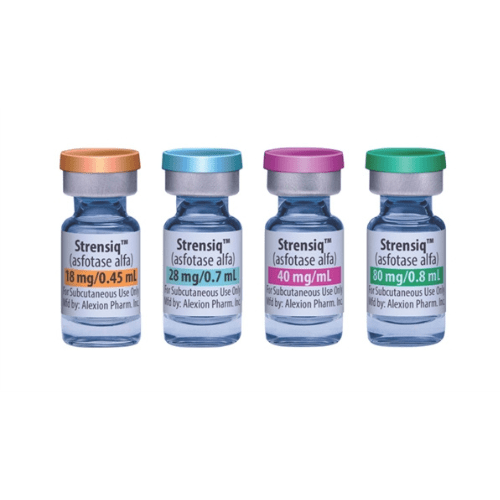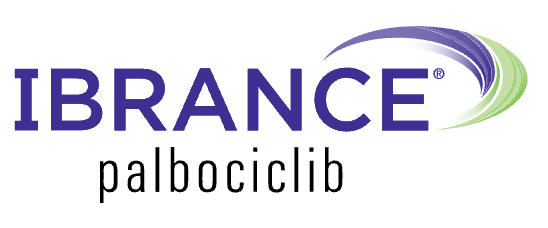
Strensiq™ is a pharmaceutical product that has been developed to address specific medical needs. This medication, classified as an alkaline phosphatase enzyme replacement therapy, is designed to provide therapeutic benefits in a targeted manner. Its formulation is intended to meet the requirements of individuals with certain medical conditions, and it is important for users to follow prescribed guidelines and consult with healthcare professionals for comprehensive information on its usage.
FDA Approval
Strensiq (Asfotase alfa) received FDA approval on October 23rd, 2015 for the treatment of perinatal/infantile- and juvenile-onset HPP. This marked a significant milestone in the treatment of HPP, as it provided the first FDA-approved therapy for this rare disorder.
Manufacturing Details
Strensiq is manufactured by Alexion Pharmaceuticals, Inc. The drug is produced using recombinant DNA technology, in which human ALP is produced using genetically engineered cells.
Indication and Usage from FDA Label
Strensiq, also known as asfotase alfa, is a prescription medication used to treat hypophosphatasia (HPP). Strensiq™ is specifically indicated for the perinatal/infantile and juvenile-onset forms of the disease.
What is Hypophosphatasia?
Hypophosphatasia (HPP) is a rare genetic disorder that affects bone mineralization. It is characterized by low levels of alkaline phosphatase (ALP), an enzyme crucial for bone formation. As a result, individuals with HPP have weakened and deformed bones, which can lead to a variety of symptoms and complications.
Symptoms of HPP
The symptoms of HPP can vary depending on the severity of the disease and the age of onset. However, some of the most common symptoms include:
- Rickets: This is a condition characterized by soft, weak bones that can cause bone deformities, such as bowed legs or knock knees.
- Osteomalacia: This is a condition characterized by softening of the bones in adults. It can cause bone pain, fractures, and muscle weakness.
- Tooth abnormalities: This can include early loss of primary teeth, delayed eruption of permanent teeth, and enamel defects.
- Other skeletal abnormalities: This can include a misshapen skull, enlarged wrist and ankle joints, and a narrow chest.
- Low muscle tone: This can cause weakness and floppiness in infants.
- High levels of calcium in the blood: This can lead to vomiting, constipation, weakness, and kidney damage.
- Seizures: This is a rare complication of HPP that can occur in infants.
Diagnosis of HPP
Diagnosis of HPP is based on a combination of clinical symptoms, blood tests, and X-rays. Blood tests can measure ALP levels, phosphate levels, and calcium levels. X-rays can show bone abnormalities, such as rickets or osteomalacia.
In some cases, genetic testing may be used to confirm the diagnosis of HPP. Genetic testing can identify mutations in the TNAP gene, which is responsible for producing ALP.
Contraindications
Strensiq is contraindicated in patients with a known hypersensitivity to asfotase alfa or any of the excipients in the drug.
Warnings and Precautions
Strensiq comes with several warnings and precautions, including:
- Hypersensitivity reactions: Strensiq can cause hypersensitivity reactions, including anaphylaxis, in some patients.
- Injection site reactions: Common injection site reactions include redness, pain, itching, swelling, and bruising.
- Nephrocalcinosis: Strensiq can lead to the accumulation of calcium in the kidneys (nephrocalcinosis).
- Lipodystrophy: Changes in the fat under the skin, such as loss or buildup, have been observed at injection sites in some patients who used Strensiq during clinical trials. It’s important for patients to inject the medicine correctly and switch up the injection sites to help prevent these changes.
- Ocular calcification: Strensiq can also cause calcium deposits in the eyes (ocular calcification).
- Monitoring of laboratory parameters: Regular monitoring of laboratory parameters, such as ALP, phosphate, and calcium levels, is essential during Strensiq treatment.
Dosage And Administration Information
1. For Perinatal/Infantile-Onset HPP:
- Doctors recommend a dosage of 2 mg per kilogram of body weight, given under the skin three times per week, or 1 mg per kilogram of body weight given under the skin six times per week. However, using the six times per week regimen might be less comfortable due to possible reactions at the injection site.
- If the initial dose is not effective, the doctor may increase it to 3 mg per kilogram of body weight three times per week.
2. For Juvenile-Onset HPP:
- The suggested dosage is 2 mg per kilogram of body weight, administered under the skin three times per week, or 1 mg per kilogram of body weight given under the skin six times per week.
- However, using the six times per week regimen might be less comfortable due to possible reactions at the injection site.
3. Administration :
- Only administer through subcutaneous injection (under the skin).
- Rotate injection sites and avoid areas that are red, inflamed, or swollen.
Dosage Forms and Strengths
Available as an injection in single-use vials with different strengths: 18 mg/0.45 mL, 28 mg/0.7 mL, 40 mg/mL, or 80 mg/0.8 mL solution.
Side Effects Of Strensiq
The most common side effects of Strensiq include:
- Injection site reactions
- Headache
- Fatigue
- Upper respiratory tract infection
- Nausea
- Vomiting
- Diarrhea
- Abdominal pain
Other less common side effects of Strensiq include:
- Chills
- Clay-colored stools
- Confusion
- Dark urine
- Dizziness
- Fever
- Irregular heartbeat
- Loss of appetite
- Mood or mental changes
- Muscle cramps
- Numbness and tingling
- Seizures
- Stomach cramps or pain
- Tremor
- Unpleasant breath odor
- Unusual tiredness or weakness
- Vomiting of blood
- Yellow eyes or skin
Recent Advancements in Strensiq
Ongoing research continues to explore the potential of Strensiq in treating other forms of HPP, including adult-onset HPP. Studies are also investigating the use of Strensiq in combination with other therapies to improve treatment outcomes.
Patient Assistance and Cost Information
Strensiq injection is available in the US and Europe. To obtain this medication, contact SANSFRO or experienced import firms. For current Strensiq cost in India, reach out to our Patient Support Team at (+91) 93157 05373 or help@sansfro.com for accurate details.
Conclusion
Strensiq represents a significant advancement in the treatment of HPP, providing patients with a safe and effective therapy to manage their bone-related complications. With ongoing research and development, Strensiq holds promise for further expanding its role in the treatment spectrum of this rare disorder.
Reference



